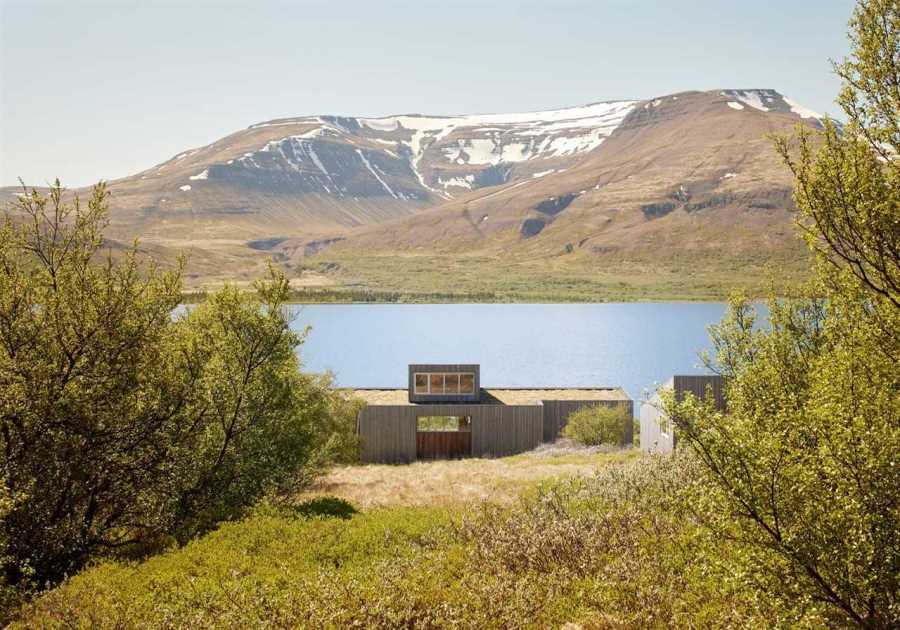Leftover urban space and timber byproducts add up to the perfect solution for a small family.
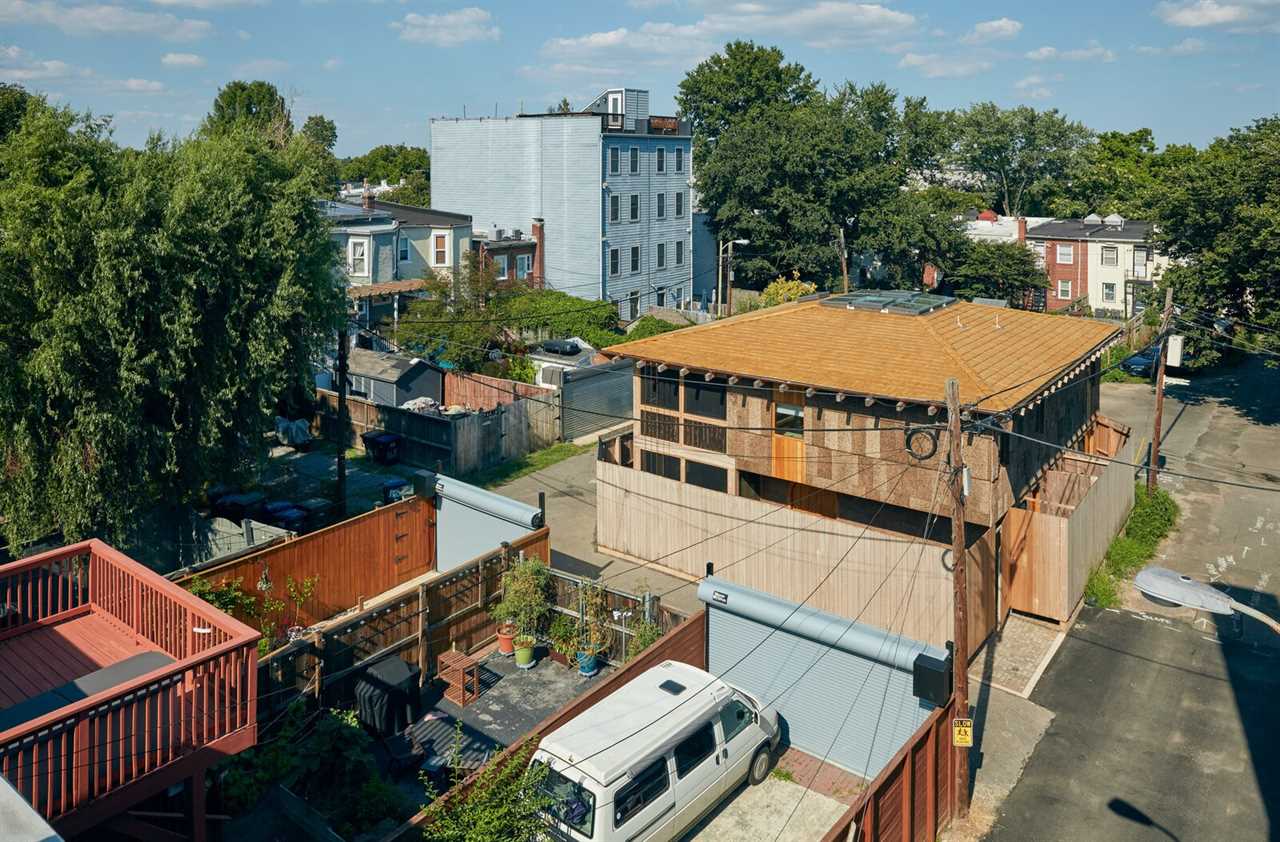
Even as Andrew and Hannah Linn were moving into their first home, in Washington, D.C., in late 2015, the soon-to-be-newlyweds were hunting for the next. Their small apartment "was the perfect place for that moment, but we never even pretended that it was the forever place," says Hannah, the director of operations for a consulting firm. Within months the couple narrowed their search down to empty lots that would allow them to fully express themselves, although Hannah also remembers, "It quickly became crystal clear just how few ground-up opportunities there are here."
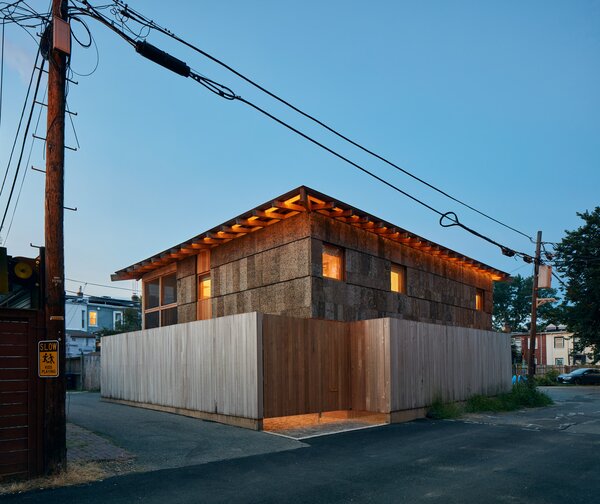
The Linns’ home, which Andrew Linn and Jack Becker completed for Andrew and his wife last year, declares its commitment to natural materials with a patchwork of wood products on its exterior. The sassafras cladding the lower portion of the house’s east face peels away from the building to become a freestanding fence enclosing a small, private outdoor space in the middle of the alley.
Photo: Ty Cole
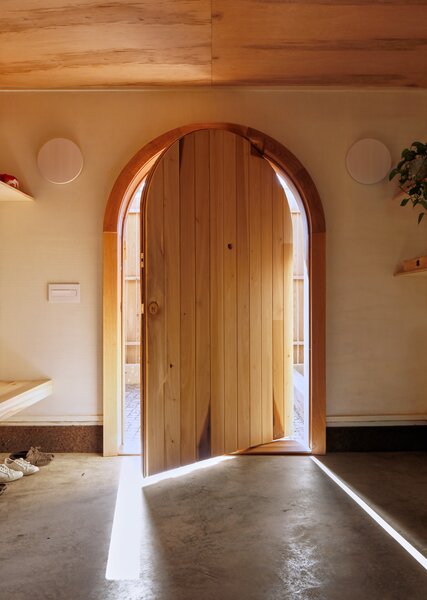
The emphasis on wood finishes continues inside.
Photo by Ty Cole
Hannah’s parents were keeping tabs from New York on real estate listings in D.C., too, and her mom eyed a pending change to local zoning that would allow new development on lots in the city’s 3,200 or so alleys. Until 1930s-era "slum clearance" erased them, small buildings on these backstreets housed more than 20,000 people. With the updated regulations scheduled to take effect in fall 2016, Hannah’s mom urged her daughter and son-in-law to explore the new pool of residential properties, and by the following year the couple had a contract to purchase a 1,900-square-foot alley lot around the corner from Congressional Cemetery.
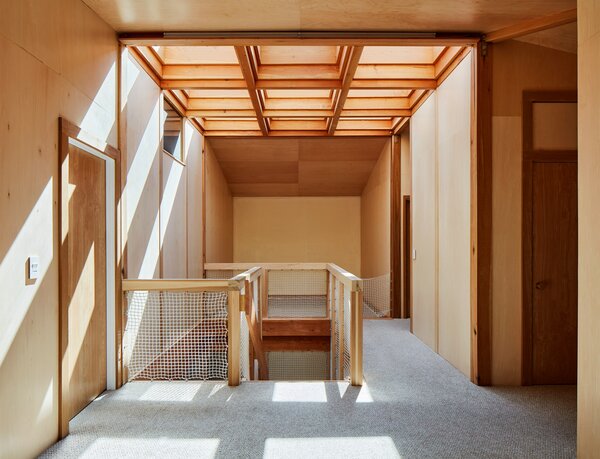
Sunshine flows through a large gridded skylight to illuminate an atrium at the heart of the home. On the second floor, the primary bedroom and a pair of smaller bedrooms straddle the stairwell.
Photo by Ty Cole
See the full story on Dwell.com: In Washington, D.C., a Back Alley Becomes a Sustainable Haven
Related stories:
- This 1960s Home’s Painstaking Renovation Is a Love Letter to Midcentury Design
- A Prefab Cabin With Massive Windows Touches Down Lightly in a U.K. Forest
- A Radically Open Bali Home Catches Tropical Breezes and Jungle Views
Read More
By: David Sokol
Title: In Washington, D.C., a Back Alley Becomes a Sustainable Haven
Sourced From: www.dwell.com/article/poplar-grove-bldus-sustainable-family-home-51c0dc03
Published Date: Wed, 11 Jan 2023 12:16:19 GMT
Did you miss our previous article...
https://trendinginbusiness.business/real-estate/real-estate-trends-should-you-buy-a-house-in-a-recession-pros-and-cons
.png)


